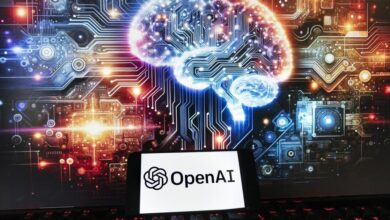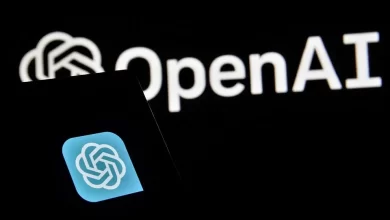Artificial Intelligence Threatens Disaster for Artists | Opinion

Recently, I met a visual artist and asked them about their work. They told me that although being a professional artist had always been tough, lately things had gotten much worse.
A few weeks ago, they were contacted by a client hoping to commission a drawing. The artist jumped at the opportunity and spent several weeks putting together samples. When they sent the samples to the client, the reply they got was both disappointing and disturbing. They were told the client had used the Dall-E AI program and were able to generate an image that worked perfectly for their purposes. The artist’s services were no longer needed.
That sort of email isn’t something an artist could have expected a decade ago, but it’s a story that’s no longer rare. Increasingly, the creative work of artists is being replaced by AI. It’s a concern for the future of art and for the future of artists, and I think we’ve finally reached a turning point.
To paraphrase Dr. Ian Malcolm from Jurassic Park, computer engineers have been so preoccupied with whether they can create AI art, that they haven’t stopped to ask whether they should. The cat is out of the bag now. AI art is all around us, and this trend will very likely continue. This makes it pressing to ask important ethical questions. Is AI art good for society? What will its effect be on artists? And how might we push back?
One effect of AI art is clear. For the artist I met at the bus stop, it meant the loss of a commission. That sort of business loss, multiplied many times over and coupled with other new threats (such as the shift to payment via “exposure”), has devastating effect. For many artists this movement will mean the loss of their ability to keep themselves afloat with their art. Many will increasingly have to rely on day jobs—with the hope that those jobs will afford them enough time to make art—while others will simply have to leave the profession.
Consider New York-based company Monumental Labs, founded in 2022. Monumental Labs promises to create, utilizing AI, works of stone art in mere hours that previously would have taken months and to produce those works at 85 percent less than the “normal” cost—that is, 85 percent less than the cost to pay a human artist. On its website, Monumental Labs declares that it is unleashing a stone art “renaissance.”
Who will benefit from such a renaissance? Companies that rely on AI, if successful in their ventures, will effectively replace many human artists. A statue in a public square that could have been created by a human sculptor for a price that helps sustain their craft and support their family will now be made on the cheap and much faster by AI. This shift is a redistribution of not just artistic labor but also artistic wealth—from the hands and mouths of artists to the hands and mouths of tech CEOs. A modern-day version of John Henry vs. the machine.

EITAN ABRAMOVICH/AFP/Getty Images
If we care about keeping human artists employed and producing great works of art, something must be done.
One thing we might do is ban at least some AI art. This move will likely be resisted, however, especially by businesses hoping to profit from AI and by clients hoping to cut costs. It also seems like an option that will be difficult to enforce. But it still might be worth a shot.
Another option is to support human artists through things like public grants, in effect subsidizing artists much like we already subsidize many businesses. Artist grants already exist and have good results, but they’re rather difficult to obtain. We’d need to drastically increase their availability. Yet the instability of the political world suggests this option might not be so insulated from things like funding cuts or—perhaps more troubling—censorship. If conservatives take control of government again, it’s conceivable they’d only approve grants for works in line with their values. That’s a problem for maintaining the full range of artistic creativity and turns surviving as an artist into something that depends on one’s politics.
Another option is the free market. Television and streaming services are less influenced by government and depend primarily on advertising for their existence. And yet, many works on television and streaming services still face undue pressure from advertisers. It’s also not hard to imagine a company like Netflix moving to produce AI-generated content if doing so would cut costs.
The best tool we have left, it seems, is our ability to make individual choices. When a government or private client chooses to pay for a work of art created by a human being rather than by AI, they in effect choose to support real artists and not just leave them out to dry—they choose to help promote real artists and not a tech company that seems bent on replacing them. This is the old story of voting with your dollar. It’s a move available to all of us and across a wide range of artistic media. We can choose to pay for a movie created by humans, or a movie created by AI; a song created by a human, or song created by AI. We can help keep human artists alive and creating their works for future generations while simultaneously choosing to withhold support from those who seek their replacement.
Human-made art holds important values, and human artists are people like you and me—they deserve to eat and be able to pursue their passions. If we care about human artists, we need to accept that AI art is a real problem, and we need to make an effort to address it.
Shawn Simpson is a Visiting Lecturer in the Department of Philosophy at the University of Pittsburgh.
The views expressed in this article are the writer’s own.
Uncommon Knowledge
Newsweek is committed to challenging conventional wisdom and finding connections in the search for common ground.
Newsweek is committed to challenging conventional wisdom and finding connections in the search for common ground.



